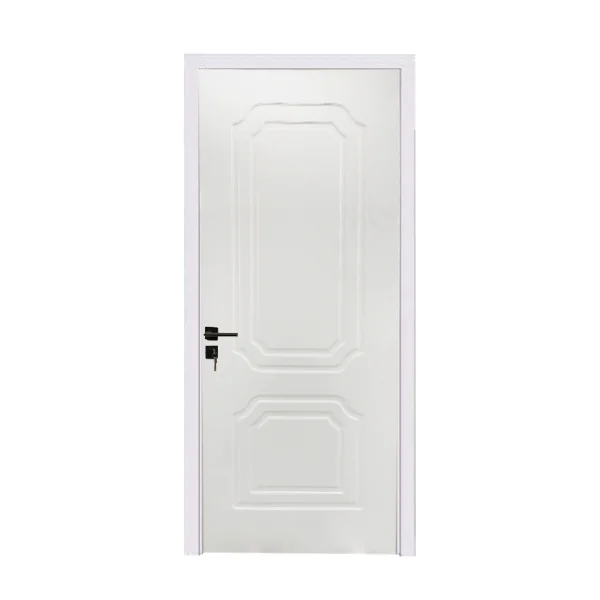PVC coated wooden room doors have gained immense popularity in recent years due to their durability, aesthetic appeal, and resistance to various environmental factors. These doors combine the natural beauty of wood with the added protection and versatility of PVC coating. In this blog post, Jinhua WanGe will provide you with the manufacturing process of PVC coated wooden room doors, exploring each step in detail.
1. Selection of High-Quality Wood:
The first step in the manufacturing process is the careful selection of high-quality wood. Manufacturers typically choose hardwoods such as oak, teak, or mahogany due to their strength and durability. The wood is sourced from sustainable forests, ensuring environmental responsibility.
2. Cutting and Shaping:
Once the wood is selected, it undergoes cutting and shaping processes. Advanced machinery is used to cut the wood into precise dimensions, ensuring uniformity and accuracy. The wood is then shaped according to the desired design and specifications of the room door.
3. Joinery and Assembly:
Joinery techniques play a crucial role in the manufacturing process of PVC coated wooden room doors. Traditional methods such as mortise and tenon joints are commonly used to ensure strong and durable connections between different components of the door. Skilled craftsmen assemble the various parts, including the frame, panels, and stiles, using adhesives and fasteners.
4. Surface Preparation:
Before the PVC coating is applied, the wooden door undergoes surface preparation. This involves sanding the wood to create a smooth and even surface. Any imperfections or irregularities are carefully addressed to ensure a flawless finish. The surface is then cleaned and primed, creating a suitable base for the PVC coating.

5. PVC Coating Application:
The application of PVC coating is a critical step in the manufacturing process. PVC, or polyvinyl chloride, is a synthetic material known for its durability and resistance to moisture, chemicals, and UV rays. The coating is applied to the wooden door using specialized techniques such as vacuum lamination or hot pressing. This ensures a strong bond between the PVC and the wood, enhancing the door's longevity.
6. Curing and Drying:
After the PVC coating is applied, the door goes through a curing and drying process. This allows the PVC to fully bond with the wood and ensures that the door is ready for further finishing treatments. The curing and drying time may vary depending on the specific type of PVC coating used and environmental conditions.
7. Finishing Treatments:
Once the PVC coating is cured and dried, the door undergoes various finishing treatments to enhance its appearance and protection. These treatments may include sanding, staining, painting, or varnishing. The choice of finishing depends on the desired aesthetic and the level of protection required.
8. Quality Control:
Throughout the manufacturing process, strict quality control measures are implemented to ensure that each PVC coated wooden room door meets the highest standards. Skilled inspectors examine the doors for any defects, inconsistencies, or imperfections. This ensures that only top-quality products reach the market.
Conclusion:
The manufacturing process of PVC coated wooden room doors involves a series of meticulous steps, from the selection of high-quality wood to the application of PVC coating and the final finishing treatments. Each stage requires skilled craftsmanship, advanced machinery, and strict quality control measures. The result is a durable, aesthetically pleasing, and long-lasting door that combines the natural beauty of wood with the added benefits of PVC coating. Whether for residential or commercial use, PVC coated wooden room doors are an excellent choice for those seeking durability, style, and functionality.
WanGe
sunny@chinawanxin.com
